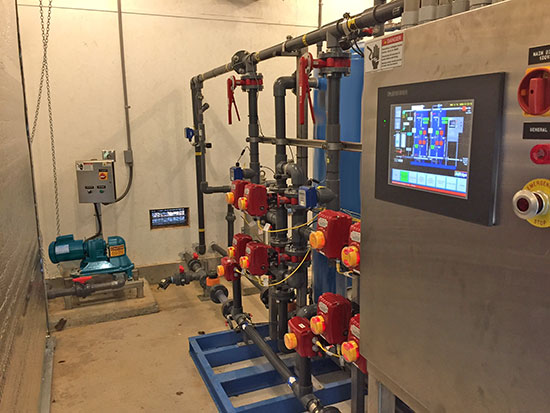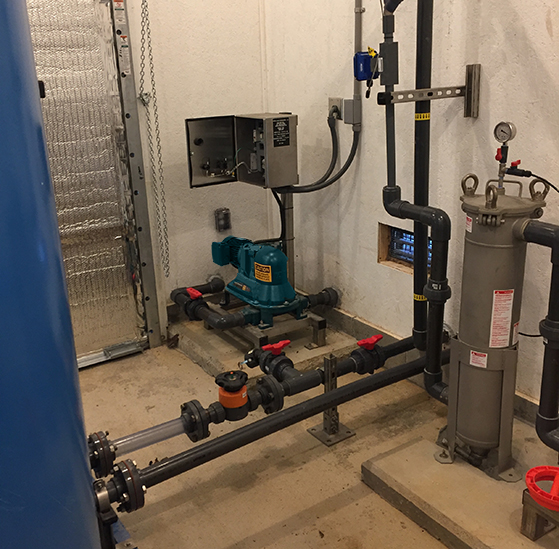
Wastecorp is proud to be a global supplier of pump systems for manufacturers of membrane bioreactor systems or MBR’s. MBR’s have become a popular for small footprint new wastewater treatment systems in both the municipal and industrial sewage treatment spaces. Manufacturers of membrane bioreactors use Wastecorp pump products for the activated sludge pumping process.
What Kinds of Pumps Are Needed For MBR’s?
When designing an MBR today it is almost critical to have pumps made by an ISO 9001 and ISO 14001 certified pump manufacturer who also adheres to hydraulic institute standards. This helps to ensure that the pumps have a track record, are of high quality and have been properly tested prior to installation in the MBR and customer use. MBR’s typically work with suspended solids, settlement separation systems, mixed liquor and concentrated waste products. The types of pumps available for mbr’s depend on the type of application:
MBR Mud Sucker Diaphragm Pumps Systems
One of the most popular pumps selected for inclusion in a municipal or industrial MBR is the Mud Sucker diaphragm pump. MBR manufacturers have specified this pump for the last few years and it is growing tremendously in popularity. First there is a wide product offering for either municipal or industrial MBR’s. Select from 1.5”-4” connection sizes with activated sludge handling capabilities up to 220 GPM depending on the model selected. Mud Sucker pumps are adaptable for mobile and stationary MBR’s. Electric, engine, air or hydraulic drive systems are available without significantly increasing the cost of the pump. Mud Sucker pumps are extremely cost effective pumps that are simple to use and service. Engineers and operators love them. Repair parts are relatively inexpensive when compared to alternatives.

MBR Plunger Pump Systems
For heavier activated sludge transfer requirements for membrane bioreactor systems Sludge Master plunger pumps have become a popular option especially for thick slurry pumping. The manufacturer recently launched a small footprint model called the Sludge Master Space Saver that can fit into a compact MBR.
MBR Sludge Pro Double Disc Pumps
For a less maintenance intensive MBR pump product the double disc pump is a popular option for higher solids and sludge concentrations. The double disc pump is part of the diaphragm pump family so, the double disc pump is essentially a more robust version of a diaphragm pump. Solids management happens with either a clack valve (flapper) or check ball system which is up to the MBR manufacturer or engineer to decide. The factory can provide support in selecting which is more ideal.
Is there a difference in the type of pump required for a municipal MBR or an Industrial MBR?
Not really, but it depends on what is being pumped and the type of activated sludge used. Wastecorp works with manufacturers of mobile MBR’s so we tend to recommend heavy duty pumps that are lighter but offer robust pumping performance.
How to get help with planning your component needs for membrane bioreactor system manufacturing?
If you are an MBR manufacturer and are looking for the latest pump technology for your packaged system, contact the pump manufacturer that supplies most of these pumps. Wastecorp can help with curves, specifications and engineering support. We can also provide case studies for several MBR manufacturers we work with. Call a Wastecorp membrane bioreactor specialist at 1-888-829-2783 or email info@wastecorp.com
I am looking for information on the Membrane Bioreactor System. I need to know a few things. 1) Is this a completely closed system or does it require holding tanks and/or lagoon storage? 2) What is the cost of a system which would satisfy the needs of a town of 700 people? 3) Can this be added on to an existing waste water plant to better filter the effected waste water? 4) The end goal is to remove more phosphorus from the effected waste water and to end up with something almost completely potable if possible! Thank you!
Email: envirocareer@gmail.com
Subject: I am aiming to design MBR in our market. I am observing suitable pumps for MBR. I will be receive pump catalog by email. Thank you so much.
Regards,
Frank